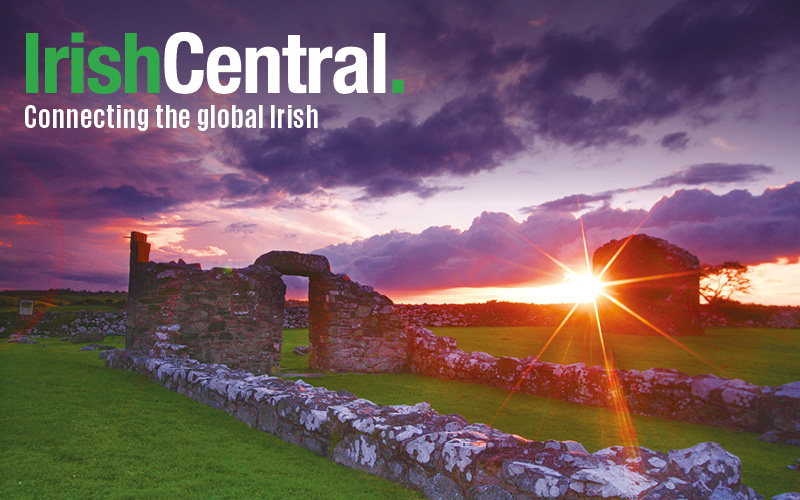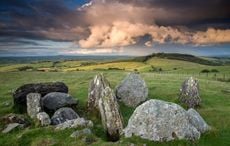Paul Keating: Part of the fascination for the pure drop of traditional music and the type of life it lures people into is the fascination with the people who made the music and the environment they came from.
Those who lead the life become ethnomusicologists of a sort mostly in an amateur vein, though some go full-bore and build academic study around it and become more professional. So besides the enjoyment of listening to the music, we revel in knowing much more about it and its creators.
Last week the names of three iconic figures in traditional Irish music caught my attention for differing reasons, but I feel they all have a connection linking the threads of history.
The news came at the end of the week of the death of famed RTE pioneering broadcaster Ciaran MacMathuna at age 84 in his adopted home of Dublin. The Limerick native retired at the age of 80 from RTE after producing and presenting the Sunday morning radio staple Mo Cheo Thu program for 35 years, following 15 years of collecting and producing the Job of Journeywork program, both of which captured traditional musicians in their own localities.
The mild-mannered and curious journalist traveled all over Ireland, England and the U.S. to find and bring to the attention of the nationwide audience, authentic musicians who would generally not be recognized much at all for their adherence to the native music, nor would they be much bothered at seeking any attention to themselves.
But his professional approach and advocacy for recognition paralleled the development of Irish radio itself in the 1950s and 1960s and provided entertainment for a considerable portion of the Irish population who saw a value in respecting the heritage of the rural countryside.
Married to traditional singer Dolly MacMahon from Galway, Ciaran lived the life of traditional musicians, and he garnered their respect and appreciation for his many years of solid recording history that was a building block for what we enjoy today.
Also laboring in the vineyard gathering in the fruits of the tradition was Seamus Ennis, a native of Finglas, North Dublin who died in 1982.
An Irish speaker and an uilleann piper, he was well suited for the work of documenting and collecting from the field for the Irish Folklore Commission, and his efforts on their behalf were noted in a diary kept in Irish from 1942-1946.
The Irish edition was published in 2007, but just last month Rionach ui Ogain edited an English language translation which makes fascinating reading for how another pioneering musicologist helped the Irish nation understand the treasures in its midst.
The work is called Going to the Well for Water: The Seamus Ennis Field Diary 1942-1946, featuring great detail and photos of life on the road -- by bike -- for the famed musician whose work also was recognized later on in broadcasting annals for RTE and BBC.
The new book makes for enjoyable reading (614 pages) for the serious student of Irish music, or for those who want to get a historical perspective on that period from a primary source.
It is published by Cork University Press and available from Stylus Publishing (800-232-0223 or www.styluspub.com) and also OssianUSA books and records (www.ossianusa.com or 603.783.4383). If you move quickly perhaps it would make a great Christmas present for that fan of Irish music.
Swirling about the scene in Ireland currently is some much appreciated attention on the famed West Clare piping legend Willie Clancy, after whom the seminal summer school in Miltown Malbay has been running since 1972.
Clancy was a much sought after musician who played the whistle and sang along with Junior Crehan and a number of other musicians from that locality who made it the go-to place long before the WCSS ever set up shop.
Peter Browne, one of the primary trad producers inside RTE Radio these days, has spearheaded the latest multimedia wave of attention and original material featuring Clancy.
RTE productions has just released a double CD called The Gold Ring, the title of one of his signature tunes that is a compilation of RTE archive material plus sourced material from elsewhere.
The CD is available from the RTE shop (www.rte.ie) but also from OssianUSA. It is a comprehensive collection of the recorded material associated with the legendary piper.
On RTE Radio One you can currently catch a program called The Lashings of Music which recalls the life of the piper once again produced by Peter Browne, also an uilleann piper who presents the weekly Radio One program The Rolling Wave available online at www.rte.ie.
For those who want to practice their Irish and utilize the video services of TG/4, the Irish language television station, there is another Browne documentary on the program Cerbh E that was aired on November 27, and archived for online viewing and downloading at www.tg4/tv.
Recognizing the role of these three giants in the Irish trad scene will deepen your appreciation for the bountiful amount of music on offer to us these days.
It would be hard to imagine that we would have such riches today if only for men like them who persevered in times that had more obstacles and challenges but they were the right men at the right time to get the job done.
Comhaltas happenings
IN 2011, Comhaltas Ceoltoiri Eireann will mark 60 years as Ireland’s leading cultural movement for the preservation and promotion of traditional Irish music.
In the decade since celebrating its 50th anniversary, it has been a productive beneficiary of over ****20 million directly from the Irish government, most of which was used to fortify its grassroots base throughout Ireland and the development of regional resource centers to carry on its mission.
One aspect of the ambitious development program carried on by CCE was to digitize the bountiful musical archives maintained on tape in the main Resource Center, the Culturlann in Monkstown assembled mainly by Seamus MacMathuna in the 1970s and 1980s.
Technology officer Brendan Knowlton was tasked with doing so, and also linking them in their entirety with the Regional Resource Center network and tying in regional archives being organized independently.
Much of that has been done now, and last weekend the Archives were also opened up online to the general public (www.comhaltasarchive.ie) for a look-see and exploration into the vast holdings of CCE.
You can register for use, though there are some restrictions for copyright reasons on the collection. Visitors to any of the regional resource centers (www.comhaltas.ie) can have full unfettered access to the material in the collection for serious researchers or music students.
Since the project is still in progress with more historic material coming on stream in the New Year like 40 years of the membership magazine Treoir documenting CCE history and Comhaltas-produced LPs and cassettes, there are still some growing pains to work out.
Input from CCE members and devotees at large are encouraged to [email protected] as they continue to refine this valuable resource which will ensure that the living tradition of traditional Irish music is accessible worldwide.
No matter how much financial capital can be invested into a voluntary organization like Comhaltas, it is really the human capital that has distinguished its productive legacy in that 60-year span.
A small but productive staff has helped run CCE out of the Monkstown facility under the direction of Senator Labhras O’Murchu, its director general and sadly, one of the key cogs in the operation, Brian Prior passed away at age 61 from cancer on Monday.
Originally from Leitrim and raised outside of London where the family moved in his youth, he came back to Ireland in the early nineties and took up work with Comhaltas in Dublin, eventually settling in Ennis, Co. Clare.
Always a gentleman of quiet dignity and commitment, he was often the human interface for the large worldwide organization, whether it was leading a slow or intermediate music session, producing marketing copy for CCE tours or in recent years, an ardent and reasoned advocate for Comhaltas in various online forums when controversial matters arose.
From his base in Clare he was active in promoting the annual Fleadh Nua in late May where on his initiative in the 50th anniversary year, he suggested honoring the senior All-Ireland ceili bands in a giant reunion which resulted in a historic CD and video documentary, and he remained active in leading a learner’s session at Cois na hAbhna, the newly renovated Ennis Regional Resource Center on Saturday nights.
Similarly his educational efforts at the weekly Wednesday night session in the Culturlann Pub inspired three volumes of FIONN SEISUIN booklets and CDs containing over 300 tunes organized in units of three to aid aspiring traditional musicians learn a common repertoire to hold their own in any session worldwide. His loss will be profound and far-reaching, but his accomplishments and contributions to Comhaltas are many and long-lasting.
Our condolences go out to his wife Anne and children Anna, John and Ashling and to the greater Comhaltas, Dublin and Ennis communities that share his loss.




Comments